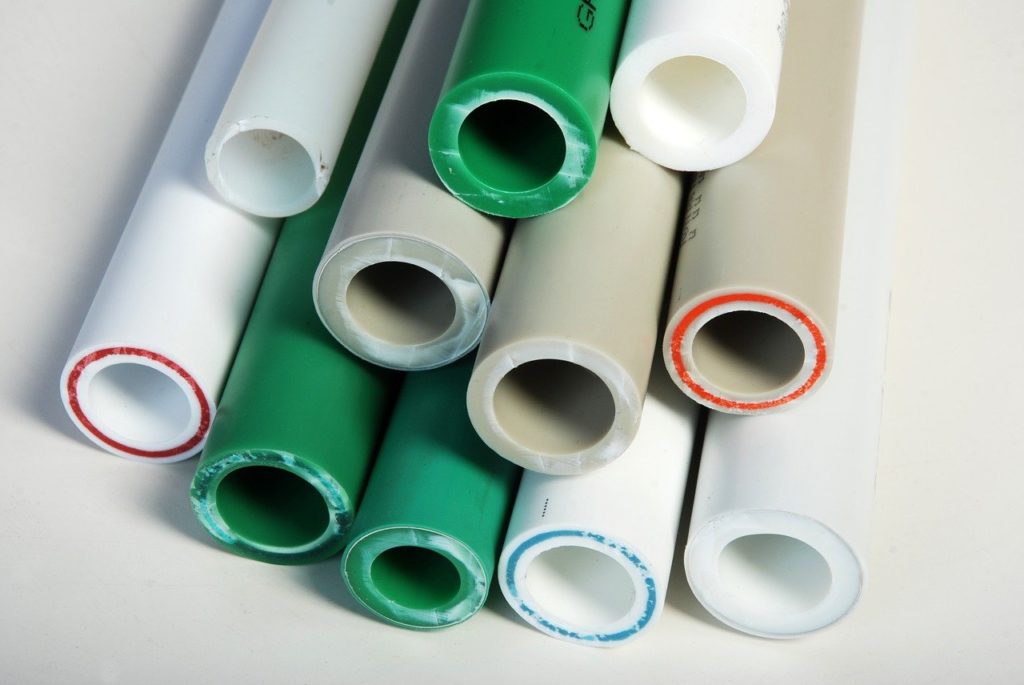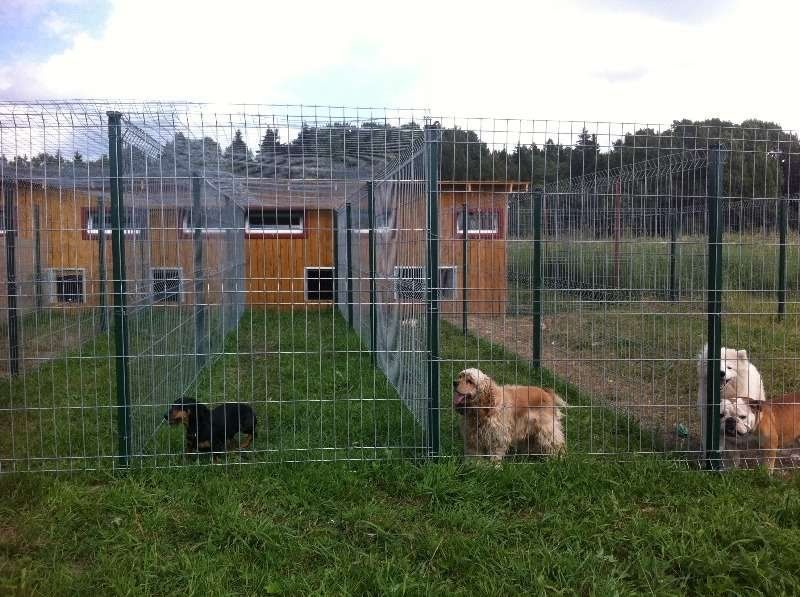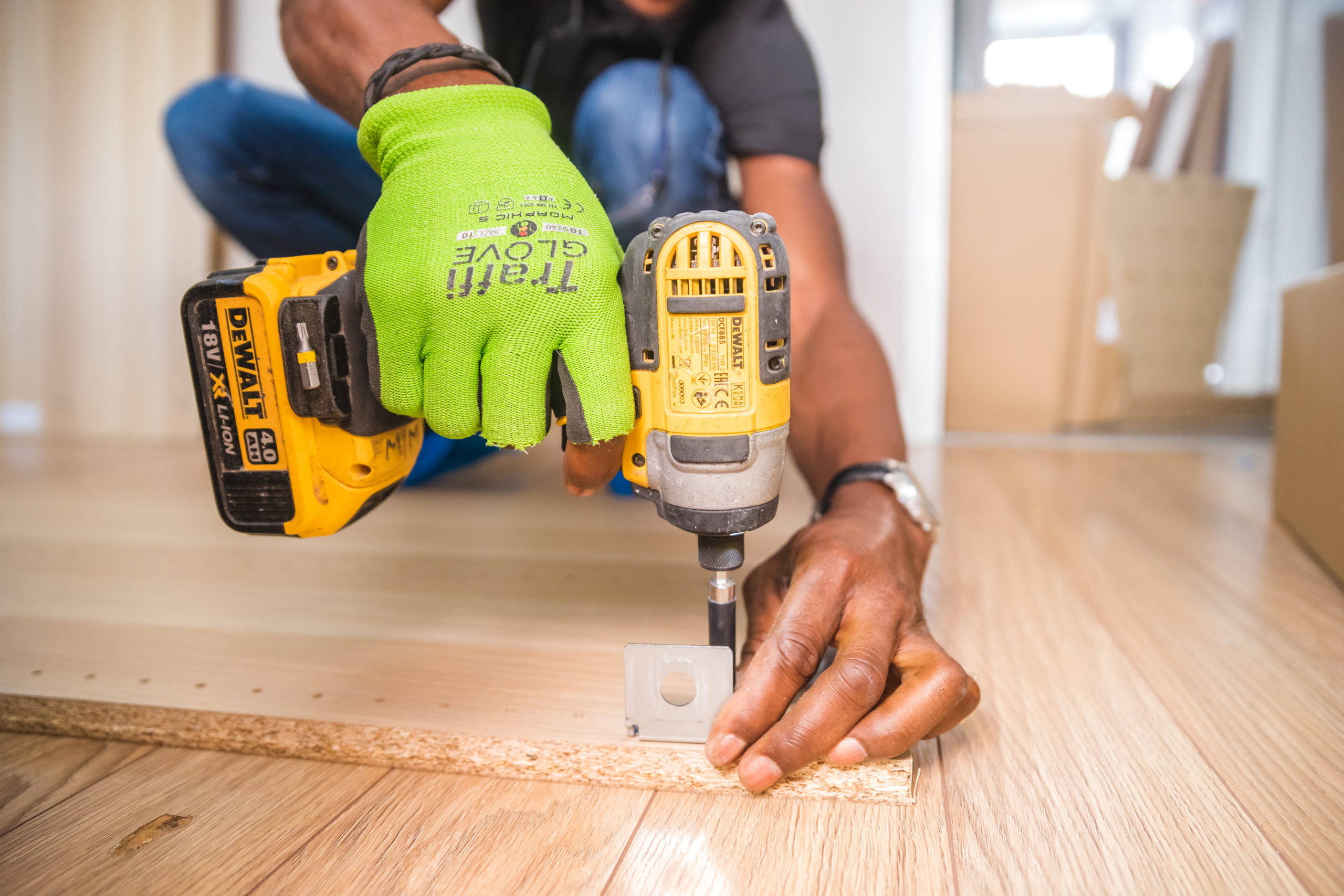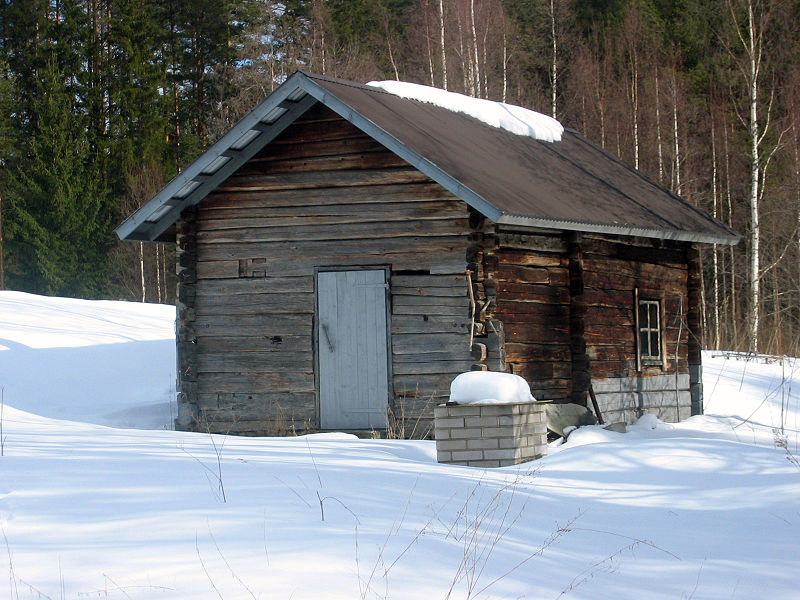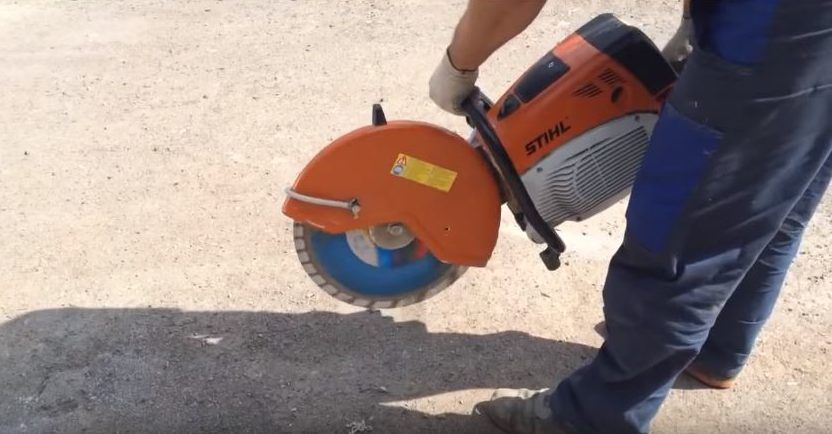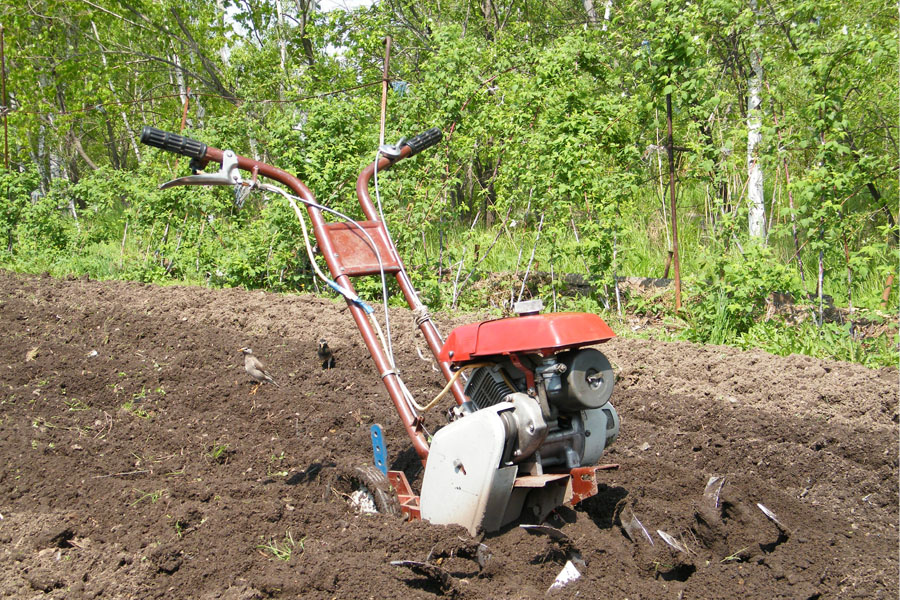Rating of the best expanders, flares and pipe expanding tools for 2025
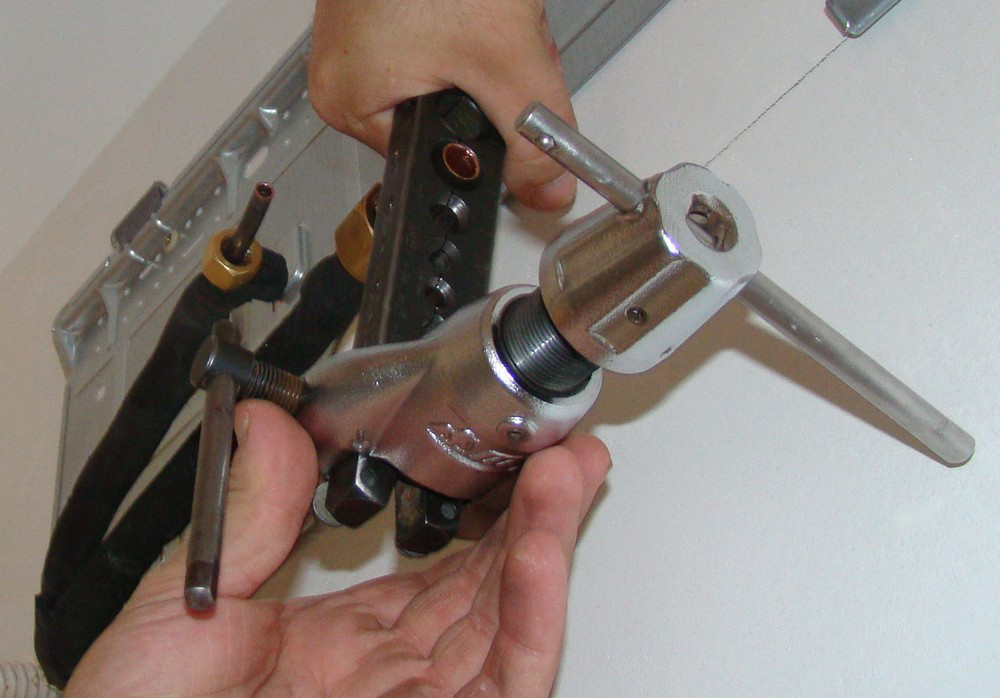
Rolling pipes (aka “rolling”) is a special technological procedure during which the original product (usually a pipe) is subjected to deformation to obtain a certain shape. During such deformation, it is possible to preserve the material itself, which distinguishes this procedure favorably from turning or milling operations.
The rolling process itself may include the following steps:
- The cross section of the pipe changes in diameter;
- The part is bent along a radius or at an angle;
- An unnecessary gap is eliminated between the pipe bender and the expandable edge (the action is called “rolling”);
- In order to connect two pipes in a telescopic way (inserting one into the other), the neck of the end of one of the pipes is enlarged (the action is called "flaring");
- An operation is performed to tightly connect the pipes (the action is called "rolling");
- Metal cutting.
Content
- 1 Existing types of rolling
- 2 Rolling methods
- 3 Do-it-yourself flaring - recommendations
- 4 Flaring tools
- 5 Learn more about alternative tools
- 6 Rolling tool
- 7 Self-made tool
- 8 The right choice of tools
- 9 Expanders as special rolling tools
- 10 Rating of the best expanders, flares and pipe expanding tools for 2025
- 11 Instead of an epilogue
Existing types of rolling
In the modern world, there are a number of special operations that are united under a common non-specialized name - rolling. The processes included in this series can differ significantly from each other both in the way they are performed and in the features of the equipment used. The most commonly used ones, namely, radial deformation and pipe bend, will be considered below.
Radial deformation
It is carried out by increasing or decreasing the cross section. The increase in diameter is called flaring, the reverse process (reduction) is called rolling.
These processes are carried out as follows:
- Flaring - the cross section expands by increasing the diameter, due to which a small socket is formed at the end of the pipe. This socket will be the key to making a fitting-free connection of various elements of the pipeline. After the necessary expansion is created, it is possible to insert a pipe of a smaller diameter into the formed socket. And then securely fix the connection.
- Rolling - in this process, the diameter of the pipe is subject to reduction (in contrast to the process described above), in which the cross section gradually narrows with the help of applied forces. This is done so that the end of the rolled pipe fits properly into the socket of the wider one and is securely fixed.
IMPORTANT! Both of the above processes are performed only on non-brittle metals without preheating. When working with hard metals, which are prone to cracking under mechanical stress, preheating is more likely to be needed than not.The heated part will become much more pliable and elastic.
Pipe bend
This type of rolling is used in the manufacture of various pipe connections and consists in the banal bending of the pipe in a certain place. To perform this operation, you will need the following tools:
- External and internal springs - they are used to change the shape of pipes made of metal-plastic. The essence of the process lies in the expansion of one spring and pressure on the other, through which a bend is formed. This method is good only for soft metals (for example, copper, aluminum) and is not suitable for working with hard ones.
- A pipe bender directly is the best solution for bending pipes to the required angle. With its help, in addition to bending, it is possible to maintain the desired radius of the pipe bend. The principle of operation is to apply muscular force to the turning lever.
- Bending rolls are special devices that allow you to work with products made of hard materials. The rollers are installed on a special platform, which is equipped with special rollers located at a certain distance from each other. Through these rollers, the tubular product is rolled. And thanks to the adjustment of the pressure roller, it will be possible to set both the radius and the angle of the bend.
Rolling methods
Depending on the temperature of the material to be rolled, all processes can be divided into two groups:
- Hot - used to process materials that have a high resistance to shape change. An example is the heating of plastic pipes for their rolling along the radius.
- Cold - used for processing soft materials, such as low-quality steel, aluminum and copper, as well as the like.
Both of these methods are used in both factory and manual processing. If independent work is supposed, then it is better to use an expander or a special set. The set should include:
- Pipe cutter;
- Templates with holes, different in diameter;
- clamps;
- Pipe expander (usually conical).
NOTE. If the set comes with a black cone and it obviously does not have traces of processing, then it is intended to work only with plumbing fixtures. Otherwise, the set can be used for split systems and when working with air conditioners.
Three types of funnel are most commonly used:
- Standard - literal, found everywhere;
- European standard fungus - visually resembles a car tire, and it is also found on cars manufactured in European countries;
- On the funnel there is a double folding of the edges - such a funnel is common in the pipelines of American-made cars.
Do-it-yourself flaring - recommendations
In any case, whatever method and method of flaring is chosen, the main task will be to obtain a smooth surface (almost mirror-like) of the socket, and it must be free from distortions and gaps, grooves and dents, and the walls must be everywhere the same thickness. From all these points in the future will depend on the tightness of the connection. The process itself is best carried out not with improvised means, but with the help of a special tool - in this case, the probability of obtaining a high-quality result will increase significantly. In addition, you should decide in advance on the limit of the thickness of future walls and do not try to step over the established limit.At the same time, walls that are too thin (especially on soft metals) can subsequently lead to self-formation of cracks, which will lead to depressurization of the system as a whole.
Flaring tools
Using the following tools, it is possible to increase the cross-sectional diameter of a pipe (the gradation is given from a simple device to a more complex one):
- The iron cone with a smooth surface is the favorite tool of most professional plumbers and split system installers. It is a cylinder ground to a conical shape with a subsequently polished surface. The principle of its work is very simple. The top of the cone is inserted into the desired section of the pipe and rotated several times. The device itself, due to the simplicity of its design, has a large operational resource. However, it is possible to work with it only on soft materials.
- A ratchet cone is a more technologically advanced and complex device. The principle of its operation is in many respects similar to that described above, however, when the cone enters the socket, the existing ratchet simplifies the screwing process and helps to regulate the applied forces.
- Expander - is designed to carry out the flaring process quickly and efficiently. Its working part consists of several segments. The working part is inserted into the socket, after which the operator, squeezing the handles of the expander, expands the existing socket to the desired size, stretching the pipe. At the same time, the working segments diverge from each other. The disadvantage of using this device is that after work the edges of the socket are not even.
- The eccentric cone rolling tool is the most modern solution among the popular tools for rolling soft materials.To use, you only need to insert the cone, then turn the handle until the socket changes to the desired diameter. Such tools are good because they are equipped with a fuse that does not allow the bell to break.
Learn more about alternative tools
For the purposes of high-quality expansion of pipe endings, a special tool can also be used - electric or mechanical. The use of special templates or cones is typical for hand tools, as the simplest. If there is difficult work to be done on the installation of a plumbing or heating system, then it makes sense to use a mechanical device.
Mechanic expander
The best quality of the operation is provided by a tool that processes the pipe with several rollers made of alloy steel at once. Such a factory-made device is equipped with a set of different-sized rollers for various pipe diameters. The process consists in the fact that the rollers are rolled along the inner surface of the workpiece with the application of the necessary pressure, due to which the part is deformed as needed. During each rolling of the roller, the dimensions of the workpiece change gradually and slightly, there is a uniform effect on thin and thick sections, as a result of which the surface is smooth, there are no roughness and cracks, and the thickness of the socket walls becomes equal.
Electric expander
These models are expensive devices and belong to the category of professional tools. They are distinguished by increased performance. The principle of operation is as follows: strong rollers simply roll out a copper socket in several rolls.At the same time, the highest quality is observed, however, such a tool pays off only in the implementation of professional commercial activities and should be used as often as possible. It also differs in that it allows you to form a diameter slightly larger than required.
Rolling tool
The simplest devices are involved in this process:
- A standard hammer is an extremely simple tool, all operations with it consist of applying light blows to the edge of the pipe. In order to prevent unwanted bending of the pipe, it is only necessary to insert a strong rod into it.
- Special pliers are a semi-professional device for processing bronze pipes, with which you can accurately adjust the bend level. In order not to have to exert excessive force when working with this device, models with extended handles should be used.
IMPORTANT! In order to more competently process the pipe edge, a special machine with rollers should be used. However, these mechanisms are intended purely for professional use, therefore, it is not economically feasible to purchase them for domestic use.
Self-made tool
In cases where the work will be of a one-time nature, then a simple procedure can be dispensed with: simply fix the tube in a vice and screw the cone into the desired end. If there is no specially machined cone, then you can get by with a ball from a bearing, which should be welded to a metal bar.
If there is more work to be done, then you will need two corners with dimensions of 32x32 or 49x40 millimeters (you can use pipe cuts of the corresponding profile). The corners should be fastened to each other with M8 bolts, wrapped with nuts.In the center of the whole structure, different holes should be drilled for different processing diameters. Chamfers are removed on the resulting holes. Templates and cones must already be ordered separately from the turner (they must be made of carbon or alloy steel). The resulting design can already be used as a conventional cone tool.
The right choice of tools
Professional devices from well-known brands are more expensive and can only pay off when they are used commercially. If in the house you need to install refrigeration equipment, air conditioning at a time, replace a section of the heating or water supply system, the budget (not even automatic) mechanical model will be the best and optimal choice. It will ensure sufficient quality of pipe processing - with proper skill, the sockets will turn out with the same walls, without cracks, with a smooth surface. In any case, it is preferable to buy such devices in specialized hardware stores or electronic sites. Be sure to come with the device must be a certificate of conformity and a seller's warranty.
Expanders as special rolling tools

The pipe expander is also used to calibrate steel, copper, aluminum piping systems for water, heating, air conditioning, and refrigeration systems without the use of fittings. Its working part is a collet head with an expansion cone-pin, which expands the moving segments during operation to obtain the required diameter.The taper pin can be moved by means of a travel screw along a trapezoidal thread, accompanied by a ratchet or tongs device (clutch tongs), or it can be equipped with a pneumatic, hydraulic, electric drive. The hand-held device is small in size, simple in design, it is convenient for them to process products made of steel, copper, aluminum.
Coupling tongs are a type of hand expander specially designed for expanding small diameter pipes in one stroke. After their work, two pipes can be securely connected without the use of fittings.
Expander design
It consists of:
- Base cases;
- Clamps and clamps;
- handles;
- Heads for nozzles;
- Mechanized system for supplying muscular effort.
The body is usually made of steel and consists of one or two tubes of various diameters, which are fastened in the middle. Comfortable grips are attached to the tube, making it easier to grip and hold the device. A head is installed at the end of the expander, onto which the appropriate nozzle is integrated, depending on the task being performed. Turning the head to the side, you can expand the opening of the nozzle to the desired diameter. It is worth noting that the most budget models are not designed to change nozzles. In this case, the concept of the head and the nozzle will "merge" and the head will turn into a fixed nozzle. The nozzles themselves can be different - from complex petal mechanisms to round metal rings that only slightly change their diameter due to the application of muscular effort to the handle. The force transmission system can be implemented due to the operation of springs, and can be performed on an electric drive or hydraulics.
Rating of the best expanders, flares and pipe expanding tools for 2025
Budget models
3rd place: "AutoDelo type D.ESAE FISO 4.8 -12.7"
A good set that will come in handy in the garage, car repair shop, at the service station. Quite easy to use, all parts have a maximum service life due to the simplicity of their design. The parts are based on a solid hull base, protected from premature corrosion. The set is well stocked.
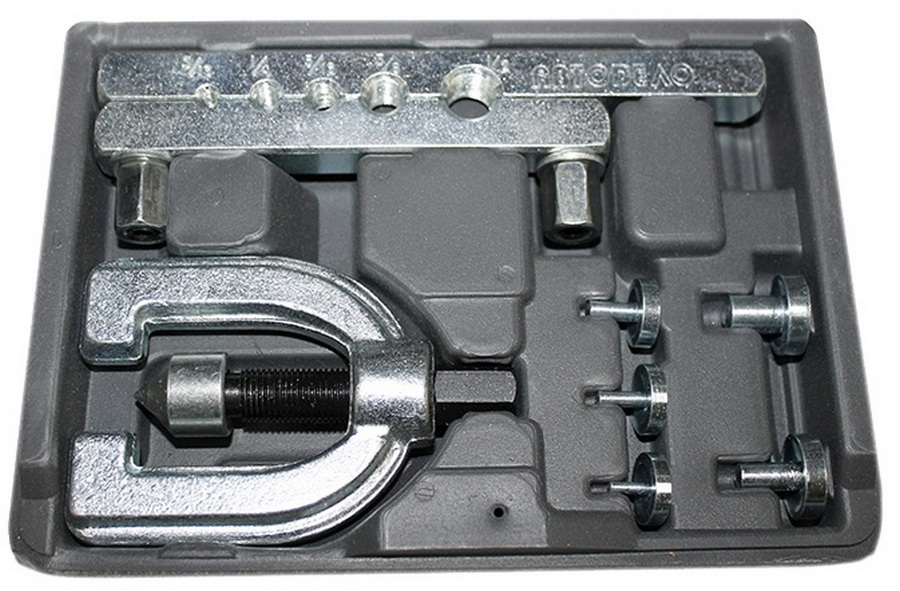
| Name | Index |
|---|---|
| Manufacturer country | China |
| Weight, kg | 1 |
| performance characteristics | Work with tubes from 4.8 to 12.7 mm. |
| Price, rubles | 930 |
- Five interchangeable nozzles in a set;
- Budget price;
- Durable adapter.
- Limited functionality.
2nd place: "7 items Technique Case 820307"
The set is specially focused on flaring brake pipes. The toolkit works great with stainless steel, copper, aluminum and brass. The kit includes a handy case and a pipe cutter with a flaring tool. The knife disk is characterized by a special hardness, however, it requires the most thorough cleaning after each use. The vise securely holds the workpiece.
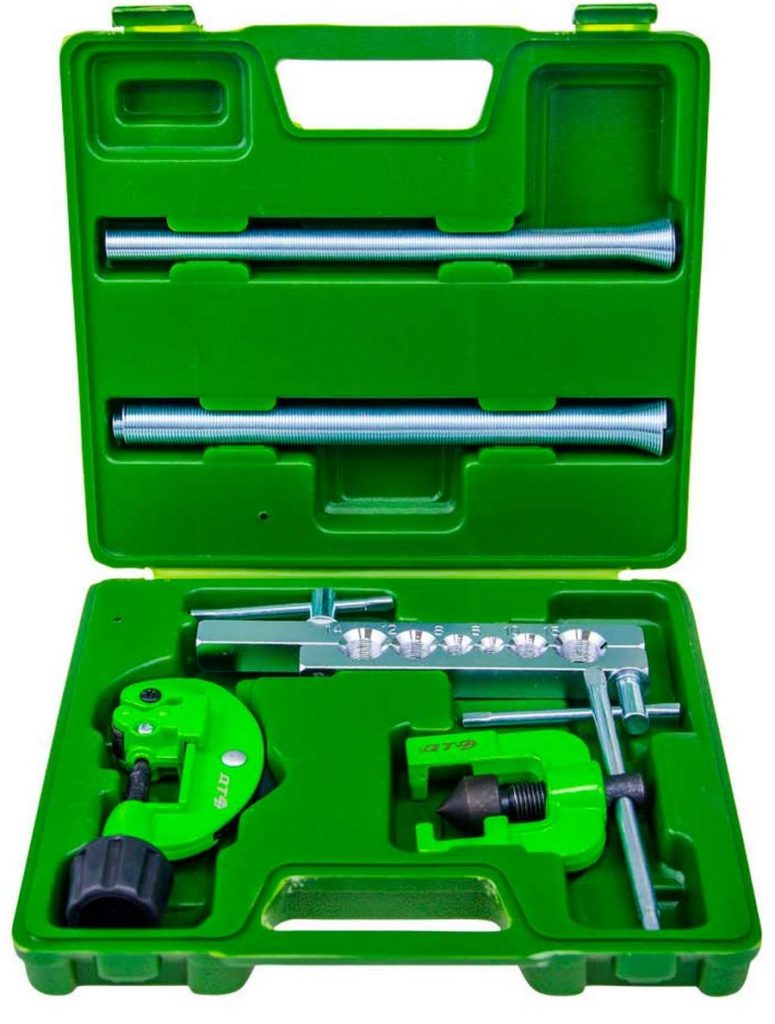
| Name | Index |
|---|---|
| Manufacturer country | Taiwan |
| Weight, kg | 1.34 |
| performance characteristics | Work with tubes from 6 to 15 mm. |
| Price, rubles | 1200 |
- Good equipment;
- Orientation to work with non-ferrous metals;
- Ergonomics on "5+".
- Inconvenient case.
1st place: "Pipe expander 3pcs AE&T TA-M1001"
The kit is positioned as a reliable tool for the purpose of slightly increasing the diameter of the pipe.Works only on soft materials and their alloys (aluminum, copper). The connection is only possible with pipes of the same diameter. Can also be used with percussion devices. Storage must be carried out only in a lubricated form (solid oil).
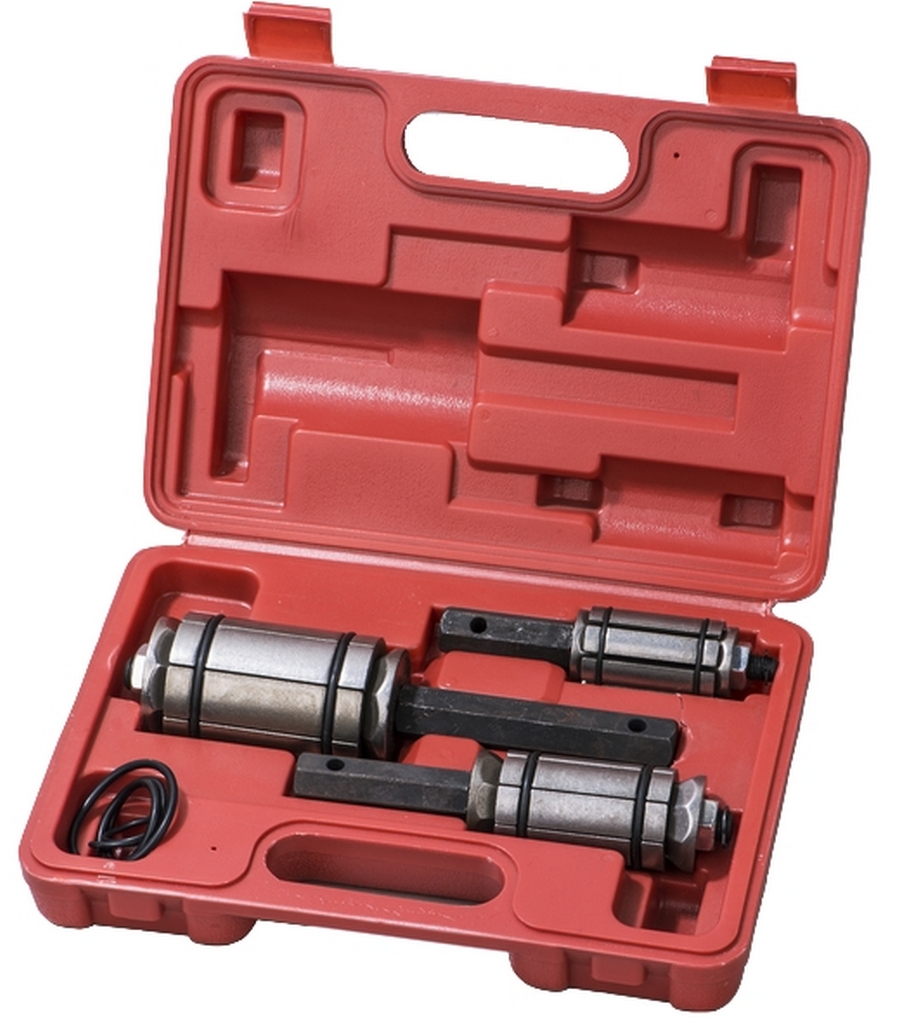
| Name | Index |
|---|---|
| Manufacturer country | China |
| Weight, kg | 2.8 |
| performance characteristics | Work with tubes from 29 to 89 mm. |
| Price, rubles | 2500 |
- Convenient case;
- Variability of the size of pipe diameters;
- Possibility to change heads.
- Special storage conditions required.
Middle price segment
3rd place: "Device for flaring MASTAK 102-12001"
Special device for expanding pipes for soldering. Can be used for pipes made of soft materials (copper, aluminium, stainless steel), works in both inch and metric systems. The scope of application is wide - from use in auto repair shops and service stations to work at a professional industrial level. All parts are made of tool steel, plated with chrome, there is an oxidized protection.
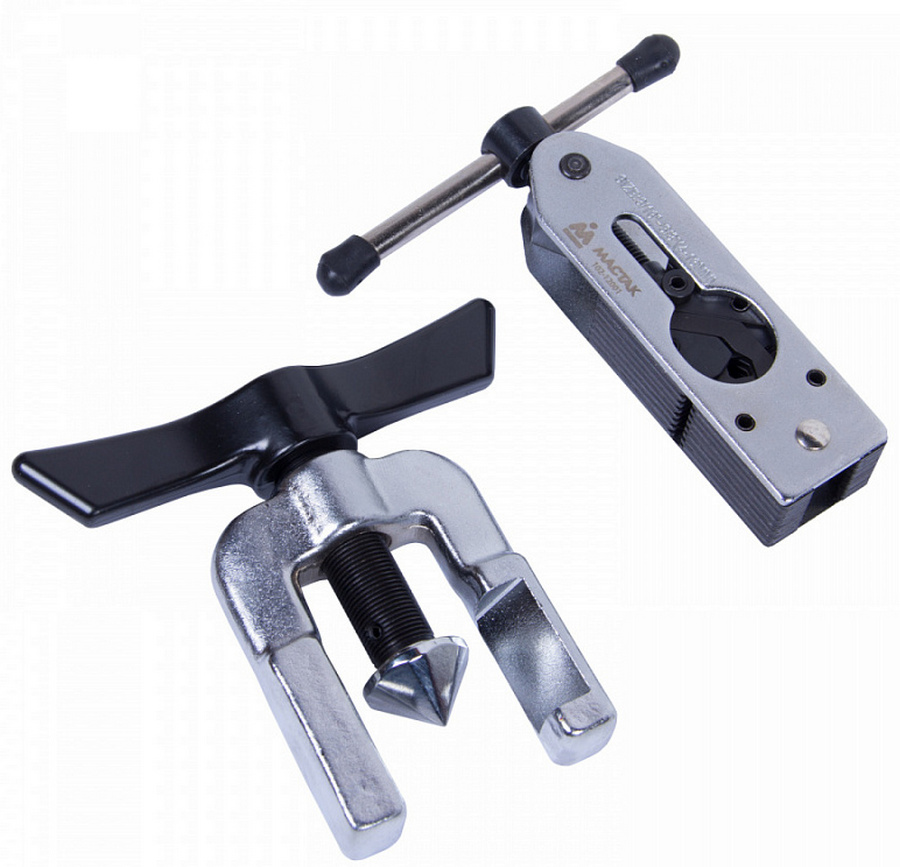
| Name | Index |
|---|---|
| Manufacturer country | Russia |
| Weight, kg | 0.88 |
| performance characteristics | Work with tubes from 4 to 16 mm. |
| Price, rubles | 3100 |
- Light weight;
- Adequate price;
- Ease of use.
- No storage case (supplied in a plastic bag).
2nd place: FORCE 656 Inch Tube Flaring Kit
The set is designed to work in the inch system, adapted to the processing of products made of aluminum-copper. Works well on thin steel.The cutter cuts steel tubes well, and the clamp perfectly fixes the workpiece - any slippage is excluded. The set is perfect for domestic use and quickly pays for itself.

| Name | Index |
|---|---|
| Manufacturer country | Taiwan |
| Weight, kg | 1.46 |
| performance characteristics | Working with tubes 4.75 dm |
| Price, rubles | 3850 |
- Excellent equipment;
- Adequate ratio of price to quality;
- Fast payback.
- Works in inch system only.
1st place: “NEO tube flaring kit 10 pcs. 02-050"
A set from a quality European manufacturer. All working parts are made of heavy-duty materials, clamps fix products perfectly, kinks are not allowed during operation. It has the quality of multifunctionality and versatility, because it fits all common pipe diameters. It is quite easy to store and transport.
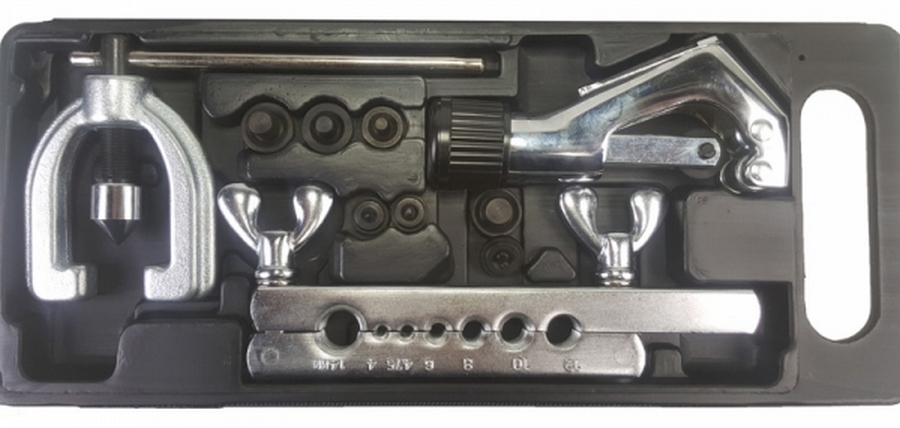
| Name | Index |
|---|---|
| Manufacturer country | Poland |
| Weight, kg | 1.58 |
| performance characteristics | Work with tubes 4 - 14 mm |
| Price, rubles | 4800 |
- Versatility;
- High ergonomics;
- Quality European brand.
- Not identified (for its segment).
Professional Samples
3rd place: “JTC-5633 tube cutting and flaring kit”
Great kit for flaring/cutting pipes. All fixtures are made of high quality alloy steel, characterized by increased wear resistance, work on most non-ferrous metals. Adapters are available for all common sizes (including 5/16) and comes with a spare blade. The edges do not jam, the result is very neat.

| Name | Index |
|---|---|
| Manufacturer country | Taiwan |
| Weight, kg | 2.44 |
| performance characteristics | Work with tubes 1/8 - 7/16 dm |
| Price, rubles | 5500 |
- Accuracy in cutting;
- High quality manufacturing material;
- Convenient briefcase for storage/transportation.
- Not identified (for its segment).
2nd place: Rolling set MEGEON 51808 k0000025305
A unique flaring kit for any plumber who is focused on cold flaring soft material tubing. Contains a complete set of tools needed to perform all rolling steps. There is a scraper for removing burrs from the side of the inner edge, the head with a nozzle works on the eccentric principle, both inch and metric systems are used in the matrix. It will be an excellent acquisition not only for service station employees, but also for specialists in the installation of refrigeration and pneumatic equipment.

| Name | Index |
|---|---|
| Manufacturer country | Russia |
| Weight, kg | 2.8 |
| performance characteristics | Work with tubes 4 - 32 mm |
| Price, rubles | 9500 |
- Excellent equipment;
- Multifunctionality;
- Light weight.
- High price.
1st place: Rothenberger 222401 eccentric flare
Focused on processing only copper products. Simultaneously with the performance of standard functions, it is able to make sides with an angle of up to 45 degrees. It is characterized as a professional device, characterized by mobility. The use of a coupling reliably controls the load and prevents the walls from bursting. The matrix has the property of automatic centering, which improves accuracy.The smooth entry of the cone into the needle template prevents cracking.
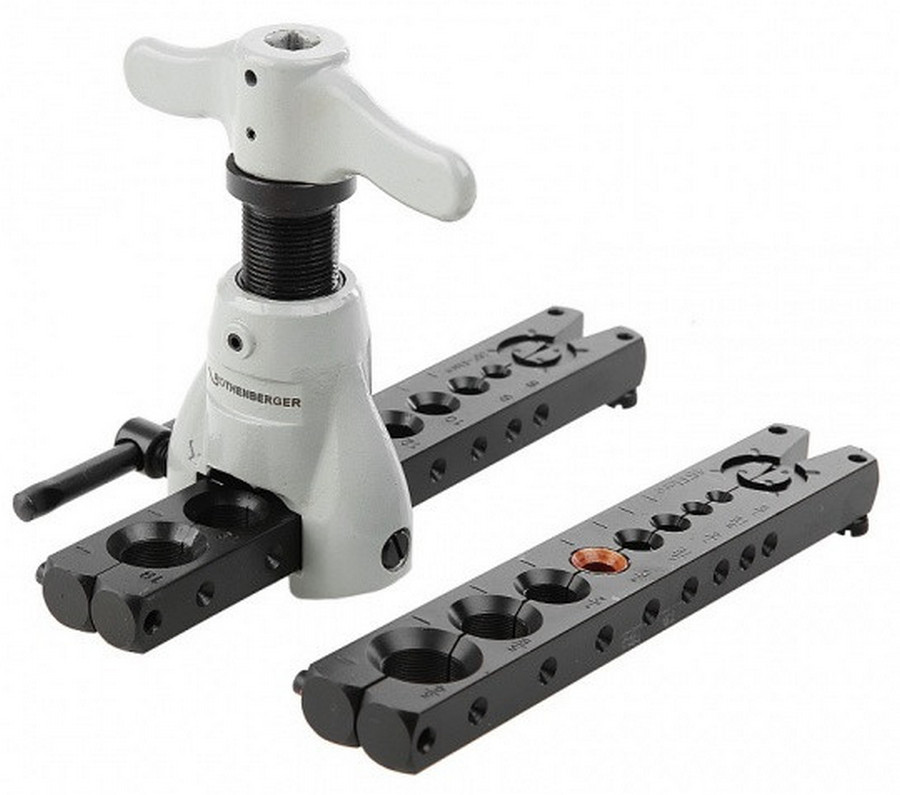
| Name | Index |
|---|---|
| Manufacturer country | Germany |
| Weight, kg | 2.71 |
| performance characteristics | Work with tubes 4 - 18 mm |
| Price, rubles | 21000 |
- The presence of an eccentric input;
- Increased accuracy;
- The possibility of processing the sides.
- Too high price.
Instead of an epilogue
The analysis of the modern market found that it is dominated by models made in Asian countries. Nevertheless, the following trend can be noted, indicating that if the device is not in the budget segment, but is made in Asia, then its quality can be trusted. At the same time, Russian designs are not very popular with domestic buyers due to their low functionality. However, they are able to maintain the quality at the level. Regarding Western manufacturers, everything is good in their samples - quality, functionality, and ergonomics. But they are extremely overpriced. From this we can conclude that samples from the middle price segment produced in the Far East may be the best choice. At the same time, for greater convenience, you should purchase devices whose matrices are capable of working in two number systems at once - both metric and inch.
new entries
Categories
Useful
Popular Articles
-

Top ranking of the best and cheapest scooters up to 50cc in 2025
Views: 131656 -

Rating of the best soundproofing materials for an apartment in 2025
Views: 127697 -

Rating of cheap analogues of expensive medicines for flu and colds for 2025
Views: 124524 -

The best men's sneakers in 2025
Views: 124041 -

The Best Complex Vitamins in 2025
Views: 121945 -

Top ranking of the best smartwatches 2025 - price-quality ratio
Views: 114983 -

The best paint for gray hair - top rating 2025
Views: 113400 -

Ranking of the best wood paints for interior work in 2025
Views: 110325 -
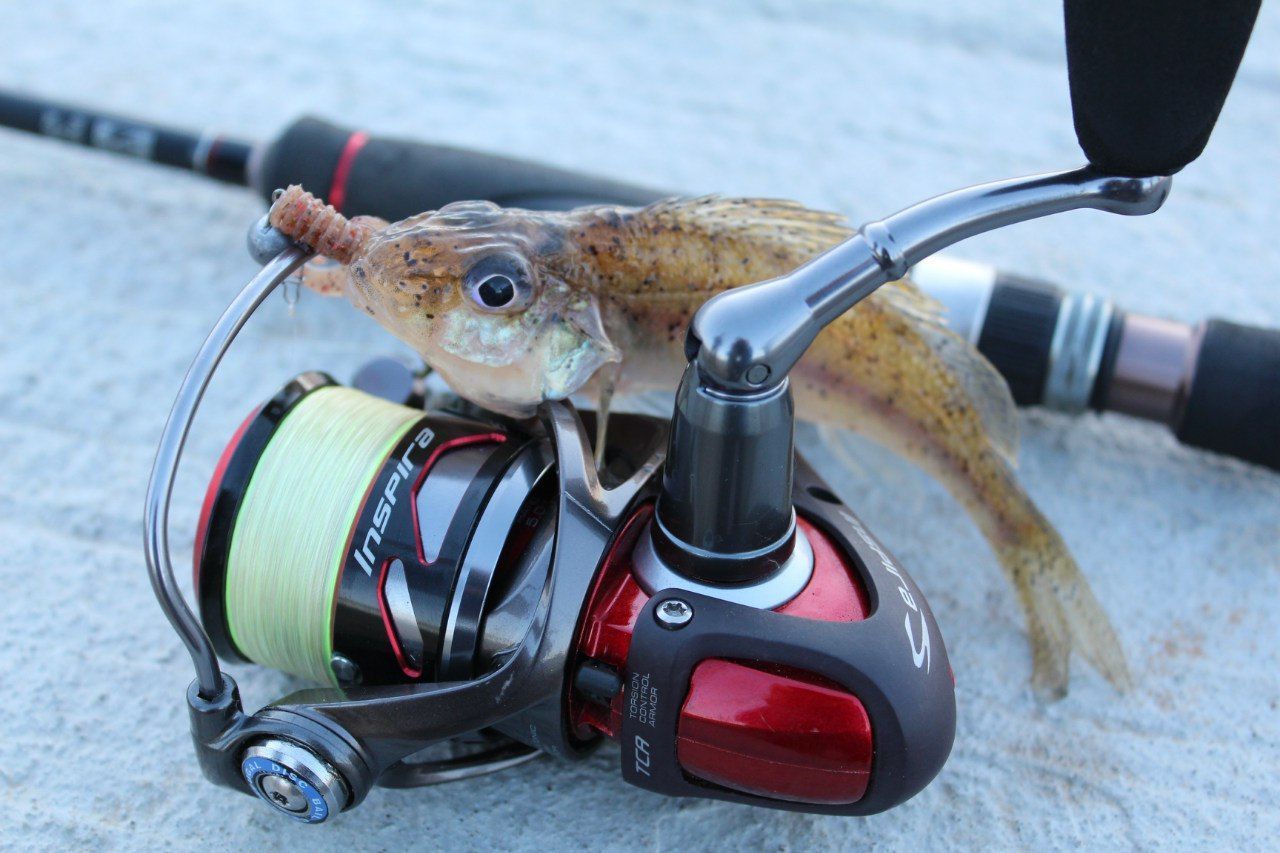
Rating of the best spinning reels in 2025
Views: 105333 -

Ranking of the best sex dolls for men for 2025
Views: 104372 -

Ranking of the best action cameras from China in 2025
Views: 102221 -
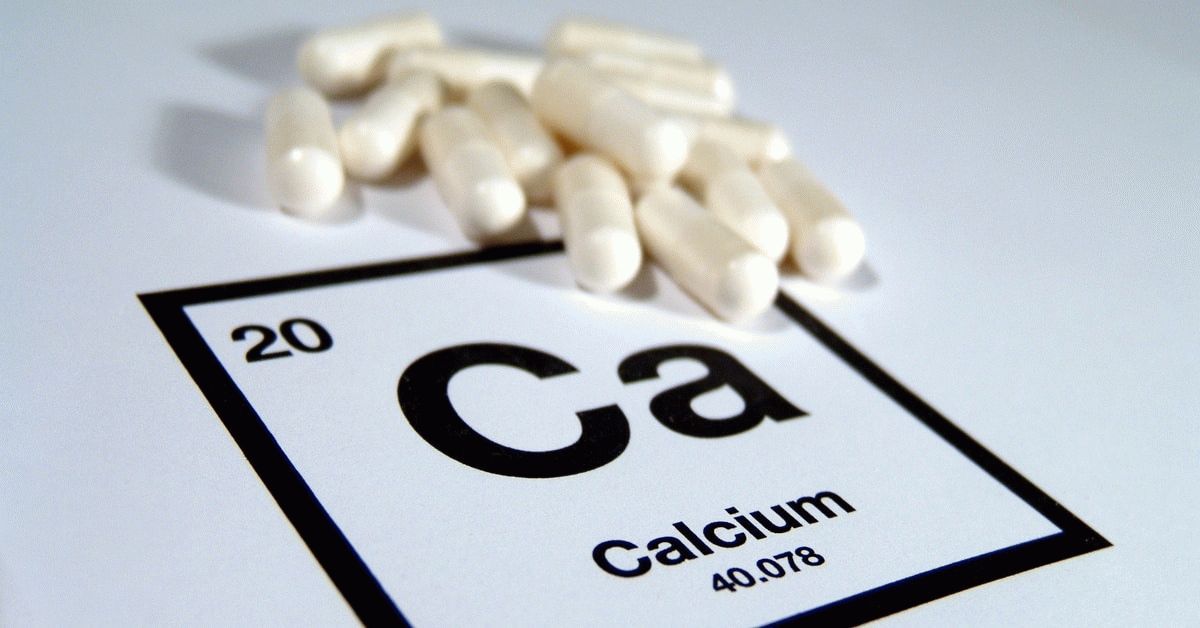
The most effective calcium preparations for adults and children in 2025
Views: 102015
